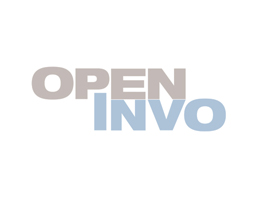The following is an interview I had with “unexpected entrepreneur” Emily Lutzker, founder of OpenInvo, a start-up with an innovative approach to innovation.
What prepared you for being an entrepreneur?
Before launching OpenInvo I was an artist and academic, and felt more comfortable at an art gallery doing a performance work in the nude, or moderating a panel of cultural theorists than in a boardroom. But not only now have I discovered that being an entrepreneur is one of the most exciting and creative things I have ever done, but my former life was the best preparation for bootstrapping a business that anyone could ask for.
As an artist, I created sculpture, video and performance works and showed my work internationally. Like many early career artists, I did not make much money from my work, nor did I have big budgets for any productions. When I needed to recruit 5 other performers, costume them, organize rehearsals and film, I normally did it on a shoestring. I can’t remember spending more than $500 on a project. Out of necessity and drive, I managed to wrangle people who were enthusiastic to help and resources that got the job done without spending much money. It does take time, attention, and people skills to get such projects done — the same skills needed for managing a startup. I can go on about this at length, but I think you get the idea.
Since I began OpenInvo, I’ve approached it with the same budgetary constraints and understanding as I did as with an artistic production. I know that the people involved are my greatest assets. That, even though 3 people give you high estimates for a job that there are always alternatives, but most importantly that people like to help. (I like to help people too). They especially like to help when they see enthusiasm and drive for a project — those things are contagious.
Now, OpenInvo has been in live beta since the end of September, and growing at a steady pace. I do hope that in the near future we won’t we bootstrapping it quite to the extent that we have been in the past, but I do know that just about anything is possible with a little creative problem solving.
Where did the idea for your business come from?
My friends were tired of hearing me come up with ideas for new products and services. They all said, “why don’t you do this business or that one — that’s a great idea!” But I had an art career and didn’t want to be a business owner, although I would have loved to prosper from my ideas. Then my (now) co-founder said to me, “Why don’t we have a business selling ideas?” I said, “That can’t be done!” With a mountain of research I happily discovered I was wrong. It’s the only business I ever wanted to be the owner of — so far.
Why are you doing this? I mean why not just get a job at a fast growing company and stop killing yourself?
I only had a “real” job once. At some point, I was told I was disruptive to the workplace. I’ll admit it, I was bored. I’m sure I was disruptive. Actually, It never occurred to me to work at a “fast growing company” or hardly a company at all. Besides, I’m sort-of un-hirable… my resume says PhD, artist, media producer. My web presence says a combination of crazy naked person and esoteric cultural studies scholar. Companies see “troublemaker.” Sure, I’m good for a university Art or New Media department, and I did love teaching, but I’m not a true academic in my heart.
What does success look like for you personally and for your company?
This is a trick question! Success means changing the world, no? Seriously… to have a thriving marketplace where people with great ideas get valued for their ingenuity, where companies get true fuel for innovation. Success for the OpenInvo is to be a center for innovation, a support system for the innovation process, and to constantly keep growing and evolving from within. I’d like to think that success is still a starting point, not only a result.
On a large scale, I think that the wonderful things that people dream up should be seen as a commodity. Over the last 50 years, any art form that can be reproduced has become increasingly cheap or free — music, films, books, etc. The people who suffer from that phenomenon are the independent thinkers, not the pop-culture successes. But independent thinking and creation are the assets of humanity, and not to foster that aspect of culture is a shame. I don’t believe we should return to a pre-mechanical reproduction culture, but instead move forward and reinvent. On a philosophical level OpenInvo can inch us towards valuing people’s creativity, rather than valuing “stuff.” Seeing that kind of shift occur will be success for OpenInvo as well as for me personally. I’m a bit of an idealist, and I want to live in a world that fosters and rewards the things that make us human and celebrates our differences.
How long have you been at it and where do things stand right now?
The original conversation that inspired the company occurred more than 2 years ago. I was living in Tel Aviv. A year and a half ago I moved back to New York to start OpenInvo, mostly because my network is here and the innovation business, in terms of content, should be here. I then had a bit of a learning process in the business and startup arenas — it’s still not over, but I’d like to think that I gained some skills and had some that I repurposed from the art and media world. In a way, I could say that I’ve been at it all my life, I just didn’t know what “it” was. It took me until March 2010 to officially form the company, and the first public release of the platform went up in late September.
Other than money, what are the biggest barriers to your success right now?
Gaining trust from the would-be Idea Provider community. To have those users understand that not only does OpenInvo NOT want to “steal their idea,” but we actually don’t want ideas to be “stolen” at all.
Describe some of the highs you’ve experienced thus far
I didn’t ask anyone for money, they volunteered. I raised a small amount from friends and family who felt my enthusiasm and believed in me, saying they wanted in. That was an amazing high — to be heard and supported like that.
And what are the low points?
The low points are only the few days when it’s more of a struggle than an adventure — realizing what I don’t know and how much there is ahead. I have an impatient streak, which makes me frustrated when things don’t go as fast as I would like. Also, it would be a relief to not spend time worrying over the lack of budget. It is a bit of a roller-coaster ride… Ohmmm…
Where has the money come from to get you this far?
Friends and family.
How hard has it been to raise money?
The small amount I raised I got without asking. Now I’m just starting to look for the right investors to grow with. I’ll let you know how hard it’s been when it’s done.
Looking back, what would you do differently?
Who has time to look back?
Did you think it was going to be this hard?
Struggle isn’t something I was ever afraid of. Yeah, sure I knew it would be hard. When are worthwhile things not hard?
Has you business taken any major pivots from concept to where you are today?
Major, no. Minor for sure. And I’m sure there are some to come. I thought i would raise money earlier, but instead just blasted ahead. I wouldn’t have been able to without the amazing support of the people around me, and perhaps a touch of insanity.
How much money do you need to raise now to get you to the next stage?
Need? I’ll make it work with whatever I have. But with 500,000-600,000 OpenInvo would be able to grow at an optimal rate.
If your friend was about to start a business, what advice would you give them?
I’d just make sure she/he knew the level of commitment and drive it takes. I would load a bunch of resources into her/his hands, spin her around three times and, say, “go get em! Call me when you need me — for advice, a shoulder to lean on, or a drink.”
Do you see yourself as a serial entrepreneur or is this your one big idea?
I can’t imagine not having another big project ahead of me. Whether that will be a for-profit business or not, who knows. Do we have a name for someone who embarks on one big project after another that are not necessarily business ventures? I’m a serial one of those.
Someone said that “any idiot can learn from his/her own mistakes, it takes a genius to learn from the mistakes of others” — what lessons do you wish you’d learned from others?
That business isn’t boring at all. That the language may be different for different industries, but often the skill set is easily translatable. And that when someone offers you a breath mint, take it.

